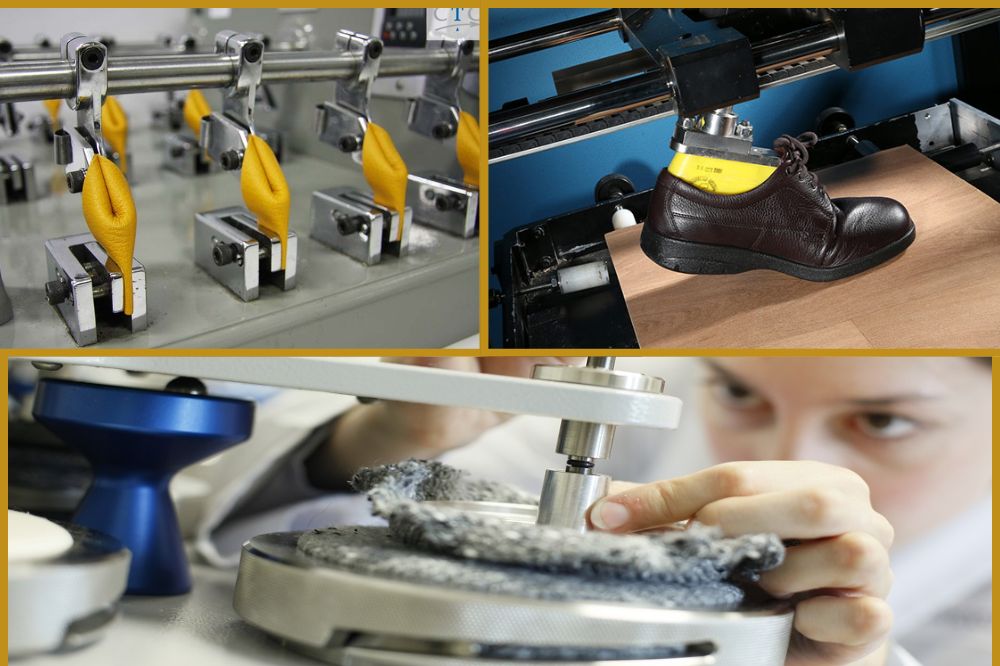Colour Fastness to Perspiration: An Overview
Colour fastness to perspiration is a crucial quality parameter that determines the resistance of a fabric’s color to the effects of perspiration. It measures how well a fabric retains its original color when exposed to sweat or other alkaline solutions. This is particularly important in garments that come into contact with sweat, such as activewear, sportswear, and everyday clothing.
Dangers of Substandard Sweat Stains
Substandard sweat stains can have detrimental effects on the appearance and durability of garments. Not only do they make the fabric look unattractive, but they can also weaken the fabric structure and reduce its lifespan. In addition, sweat stains can be difficult to remove, resulting in permanent discoloration and rendering the garment unwearable.
National Testing Standards
To ensure consistent and reliable evaluation of colour fastness to perspiration, national testing standards have been established. These standards outline the test procedure, principles, and apparatus required to conduct accurate assessments.
Overview of the Test Procedure
The test procedure involves subjecting the fabric to a specified solution that simulates perspiration. The fabric is then evaluated for any color change or transfer onto a reference fabric.
Test Principle
The test principle is based on the fact that perspiration contains various components, such as salts, urea, and fatty acids, which can react with dyes or pigments present in the fabric. This reaction can lead to color change or staining.
Test Apparatus
The test apparatus typically includes a perspiration solution, sample holders, reference fabric, and a color assessment system. The perspiration solution is prepared according to the specified composition and pH level.
Test Procedure
The fabric samples are prepared and placed in the sample holders. The perspiration solution is poured onto the fabric, ensuring complete saturation. The samples are then dried and evaluated for any color change or staining. The color assessment is carried out using a colorimeter or visual assessment against a reference fabric.
Precautions
During the test, certain precautions should be taken to ensure accurate results. These include maintaining consistent temperature and humidity conditions, avoiding contamination of the samples, and following the specified test duration.
Should the Last Seam of a Combination Specimen be Removed when Conducting the Test?
Standards for colour fastness to perspiration testing vary regarding the removal of the last seam of a combination specimen. Some standards require the removal of the last stitch, while others do not. It is important to refer to the specific testing standard being followed to determine the appropriate procedure.
Standards that Do Not Require the Removal of the Last Stitch
There are standards that do not mandate the removal of the last seam line. In such cases, the test is conducted with the combination specimen intact, including the last stitch.
Standards Requiring the Removal of the Last Stitch
On the other hand, certain standards specify the removal of the last seam line before conducting the test. This is done to eliminate the potential influence of the seam on the test results.
Standards that May or May Not Remove the Last Seam Line
There are also standards that provide flexibility in deciding whether to remove the last seam line or not. In such cases, the decision may depend on the specific requirements of the garment or the intended application.
Conclusion
Colour fastness to perspiration is a critical aspect of garment quality. It ensures that the fabric retains its color and appearance even when exposed to sweat. By following the appropriate testing standards and procedures, manufacturers can ensure that their garments meet the necessary quality requirements and provide customers with durable and aesthetically pleasing products.
Factors Influencing Colour Fastness to Perspiration
Several factors can influence the color fastness to perspiration of a fabric. These include the type of fiber, dye or pigment used, fabric construction, and finishing treatments applied. Understanding these factors is essential for improving the color fastness performance of garments.
How to Improve Colour Fastness to Perspiration
To enhance the color fastness to perspiration of garments, manufacturers can consider the following measures:
- Using high-quality dyes or pigments that are specifically designed for perspiration resistance.
- Optimizing the dyeing or printing process to ensure maximum color penetration and fixation within the fabric.
- Choosing fibers and fabric constructions that are inherently resistant to perspiration-induced color change.
- Applying suitable finishing treatments, such as anti-pilling or anti-staining agents.
- Conducting regular quality control tests to ensure consistent performance.
Common Sense: How to Remove Sweat Stains from Clothes
While color fastness to perspiration is crucial for preventing sweat stains, it is also important to know how to remove them in case they occur. Here are some common sense tips for removing sweat stains from clothes:
- Act quickly: Treat the stain as soon as possible to prevent it from setting.
- Pre-treat: Apply a stain remover or a mixture of water and detergent directly to the stain.
- Gentle scrubbing: Gently rub the stained area with a soft brush or cloth to loosen the stain.
- Soak: Soak the garment in a solution of water and detergent for a few minutes to further loosen the stain.
- Wash: Launder the garment as per the care instructions, using an appropriate temperature and detergent.
- Avoid heat: Do not expose the stained area to heat until the stain is completely removed.
By following these simple steps, you can effectively remove sweat stains and maintain the appearance of your clothes.
In conclusion, understanding colour fastness to perspiration and taking necessary measures to improve it is crucial for garment manufacturers. By adhering to national testing standards and considering factors that influence colour fastness, manufacturers can ensure their products meet the desired quality standards. Additionally, knowing how to remove sweat stains from clothes can help maintain the aesthetics and longevity of garments.






